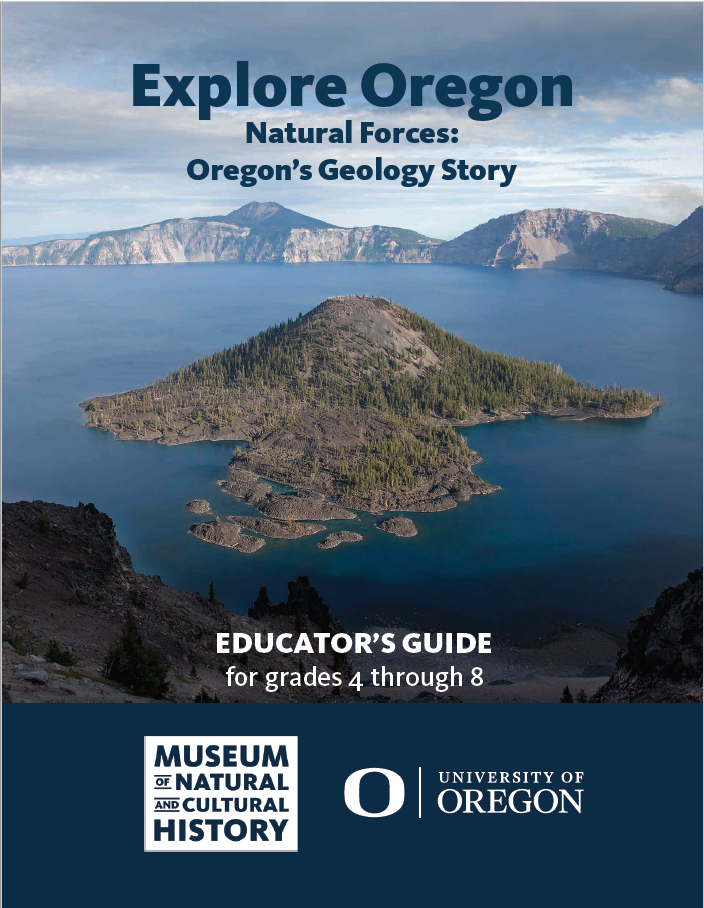Help your students stay connected and curious. With our teaching resources, you can challenge your students to be scientists or social scientists, inquiring deeply into Oregon’s history, geology, and more—whether in the classroom, remotely, or somewhere in between!
Subscribe to our digital newsletter for K-12 educators.
EDUCATOR GUIDES
What was life like for African Americans living in Oregon in the 1960s and 1970s? What obstacles did they encounter? What has changed since then and what issues are we still working on today? Use our downloadable educator's guide with the online Racing to Change exhibit to teach about the civil rights era in Oregon with a focus on Eugene and the University of Oregon.
Combining hands-on learning with class discussion, the guide's 10 activities will invite students' exploration of the online exhibit and individual and group reflection on its key themes. The guide is fully aligned with Oregon and national content standards.
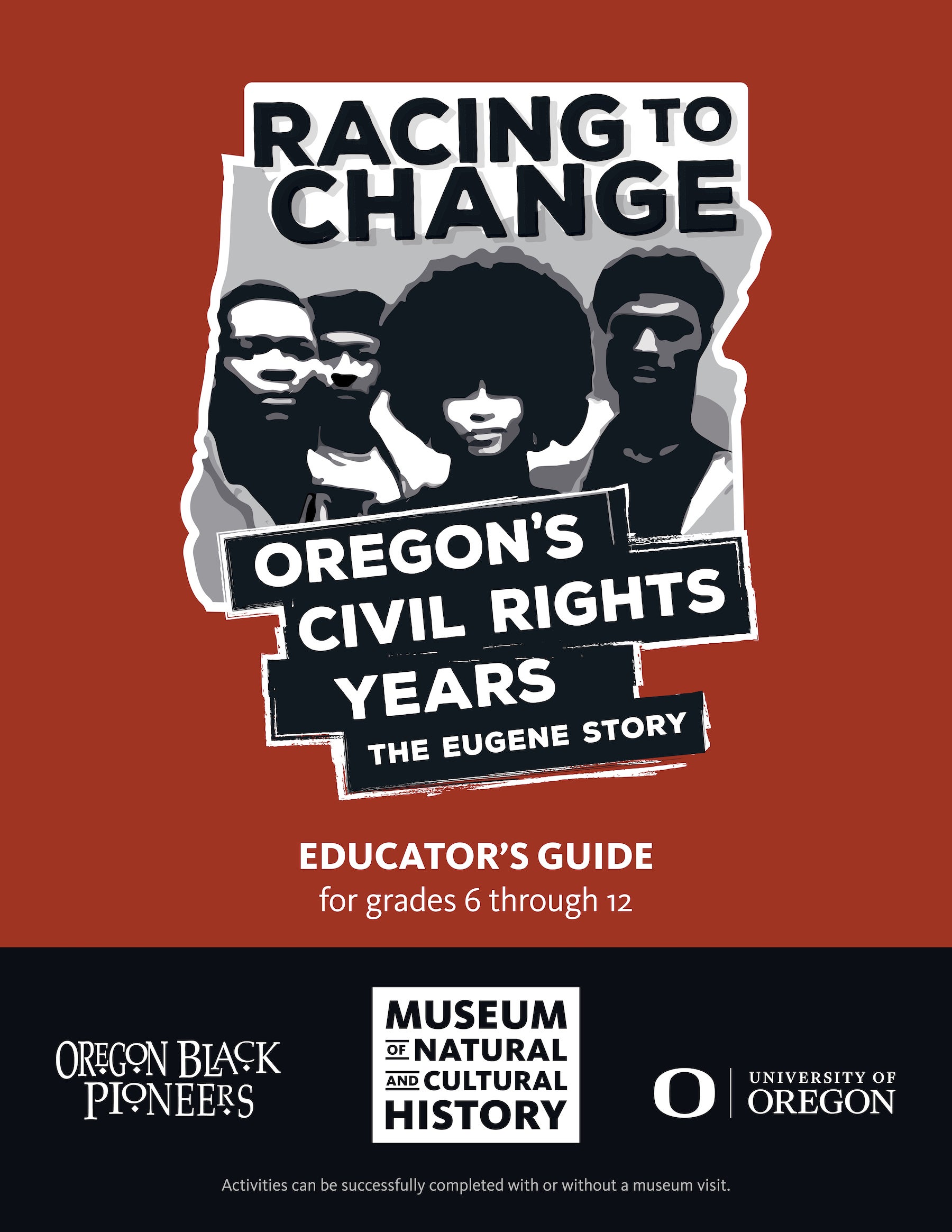 |
Experience the dynamic forces that shape Oregon’s landscapes, climate, and ecosystems. With our virtual Explore Oregon exhibit and the activities in this guide, students will take off on a geology adventure to discover our ever-changing planet Earth—investigating rock and mineral specimens, riding on the rock cycle, and discovering how earthquakes, tsunamis, and volcanoes have shaped Oregon’s landscape over time. Activities can be completed in any order and modified to fit your students’ needs and classroom setup. The guide can be used with or without a museum visit.
|
Meet a giant salmon, an Ice Age sloth, and other amazing animals from across the millennia. Through the virtual Explore Oregon exhibit and the activities in this guide, your students will go deep into Oregon's past and learn how a few of the 8.7 million animal species on Earth adapt and evolve. Activities can be completed in any order and modified to fit your students’ needs and classroom setup. The guide can be used with or without a museum visit.
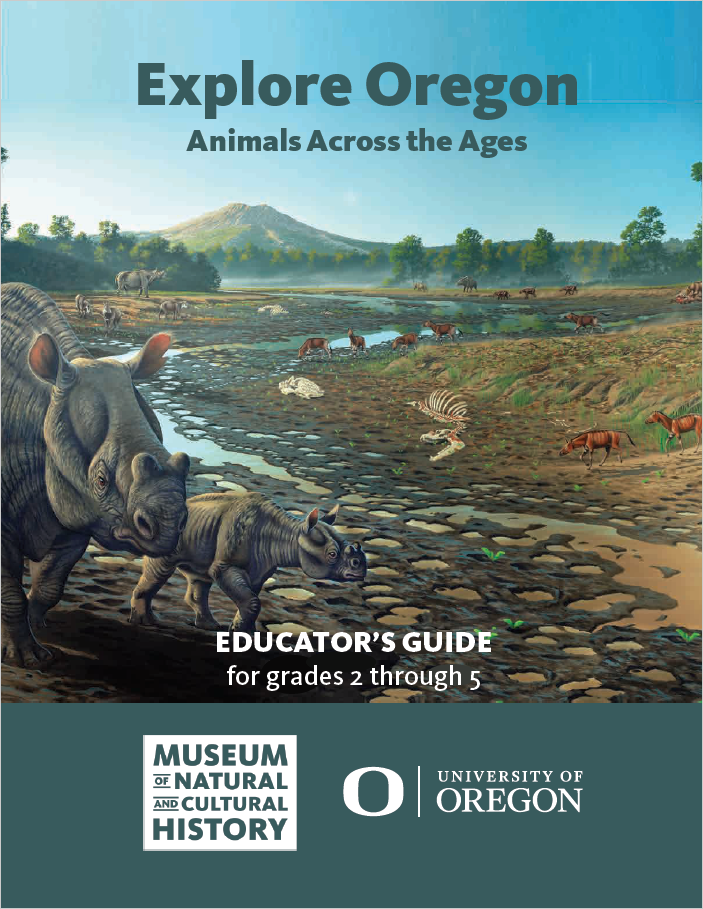 |
Delve into Oregon’s story, from the archaeology of the First Americans to the dynamic cultures of today’s Tribes. Combining interactive displays with world-class anthropological collections, the virtual Oregon—Where Past is Present shares 14,000 years of Oregon stories and invites students to tell their own.
Along with the museum’s own activities, this guide connects the Oregon—Where Past is Present exhibit with the Oregon Department of Education’s Tribal History/Shared History lesson plans and includes recommendations for how to incorporate the virtual or in-person exhibit with your classroom learning.
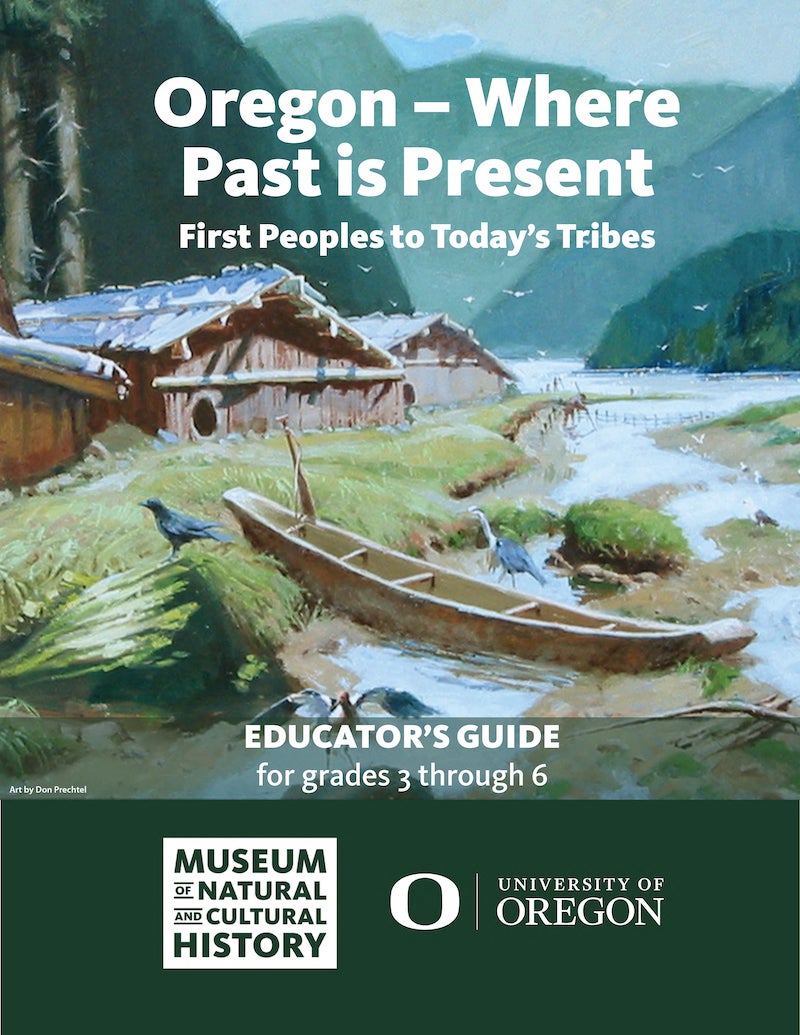 |
LESSON PLANS, ACTIVITIES, AND WORKSHEETS
Bring your school group, grades 6-12, for an educational program at the museum focused on the Roots and Resilience exhibit. Book you program here.
If you are interested in learning more about Chinese American History in Oregon after your visit to the museum, you can use the resources below to extend your class’s study.
The Oregon Historical Society offers a curriculum surrounding this topic for grades K-8, including a traveling trunk of hands-on materials that can be sent from the Historical Society to your classroom. Learn more here.
The Oregon Historical Society also offers a Chinese Diaspora in Oregon Document Based Questions (DBQ) curriculum for grades 6-12. Learn more here.
- Great Basin Poster (bilingual)
- Columbia Plateau Poster (bilingual)
- Coast Poster (bilingual)
- Western Valleys Poster (bilingual)
- Oregon Tribal Map (bilingual)
- Archaeology Word Challenge (ANSWER KEY)
- Archaeology Detective Worksheet (ANSWER KEY)
- Archaeology Crossword Puzzle (ANSWER KEY)
- Artifact Analysis Worksheet
Design Challenges
- Fossil Fun Activities
- Paleo Puzzles
- Dinosaur Poster (English) (Spanish)
- Fossil Word Challenge (ANSWER KEY)
- Duck Detective Activities
- Ecosystem Dominoes Activity
- Can You Hear Me? Activity
- Animal Teeth and Skulls Handout
- Habitat Detectives Lesson Plan (Grades K-2)
- Wild Animal Exploration Lesson Plan (Grades K-2)
- Habitats and the Ecosystem Lesson Plan (Grades 4-8)
- Animals and their Habitats Lesson Plan (Grades 4-8)
- Animal Adaptations Lesson Plan (Grades 4-8)
- Big Bad Wolves - Fact or Fiction? Lesson Plan (Grades 6-8)
DIGNITY: Tribes in Transition Modular Unit (Grades 9-12)
Curriculum consultant and Willamette High School teacher Dain Nelson created the DIGNITY Modular Unit in 2017, and we are delighted to offer this resource to Oregon high school teachers. Fully aligned with Oregon content standards, the unit is based on the book and traveling exhibit DIGNITY by photographer Dana Gluckstein.
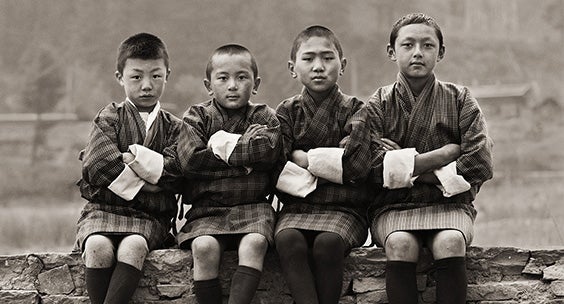 |
Take your students on a journey across campus to find the hidden geologic and historic treasures.
OTHER RESOURCES
Explore basketry, skulls, fossils, and much more in our collections galleries.
Visit the YouTube and Vimeo channels for videos from current and past exhibits, lectures, and more.
Learn about some of the museum's ancient mammals with science hip hop artist Mike Likes Science.
Confederated Tribes of Grand Ronde Tribal History curriculum unit
Historically accurate and culturally relevant curricula about Oregon Native Americans for grades K, 2, 4, 6, and 8.
Oregon Department of Education’s Tribal History/Shared History resources
An outgrowth of Oregon Senate Bill 13, this growing collection of resources includes an educator toolkit, an Oregon map with Tribal locations, and more.
The Confederated Tribes of Siletz Indians' 6th grade curricula on estuaries and wetlands, developed in partnership with the Institute for Applied Ecology.
Honoring Tribal Legacies
A digital collection of teaching resources created by Indigenous curriculum designers and allies, for use in classrooms everywhere. The ten new lessons, developed at the University of Oregon, honor an inclusive approach to social studies, STEM subjects, language, and more.
Smithsonian National Museum of Natural History
Lesson plans, web-based activities, and other educational resources in science and natural history topics.
Smithsonian National Museum of the American Indian
Provides educators and students with new perspectives on Native American history and cultures.
National Native American Heritage Month
November is National American Indian Heritage Month. Browse ready-to-use lesson plans, student activities, collection guides, and research aids.
City Nature Challenge Education Toolkit
Your students can be part of a community of naturalists in the City Nature Challenge, an international effort by everyday people to find and document plants and wildlife in cities around the world. The challenge happens each year around Earth Day. Learn more.
Facing History and Ourselves
Uses lessons of history to challenge teachers and their students to stand up to bigotry and hate.
IllumiNative's K-5 Lesson Plans
IllumiNative's Indigenous Peoples' Day page includes dynamic, downloadable K-5 lesson plans that replace misinformation and stereotypes with real stories of contemporary Native American people and their ongoing contributions to American life.
Native Land
Native-Land.ca offers an online platform where users can interact with maps of Indigenous territories, treaties, and languages, and locate themselves and their favorite places on the map. They also have a teacher's guide.
Stay up to date on educator resources, K-12 programs, and more.Subscribe to our digital newsletter for K-12 educators.
As we develop more online educational resources, we welcome your questions, suggestions, and ideas. Email us at mncheducation@uoregon.edu.

